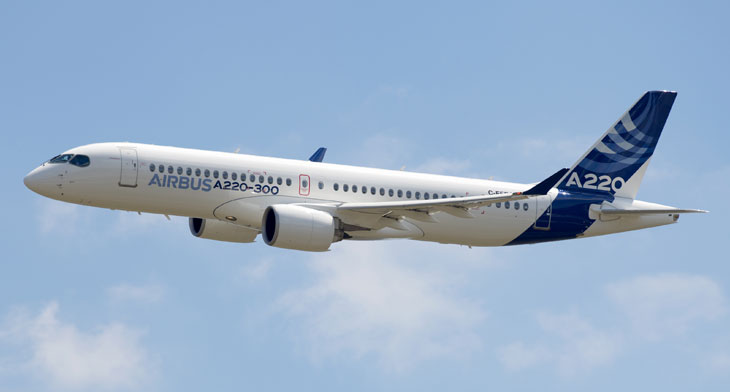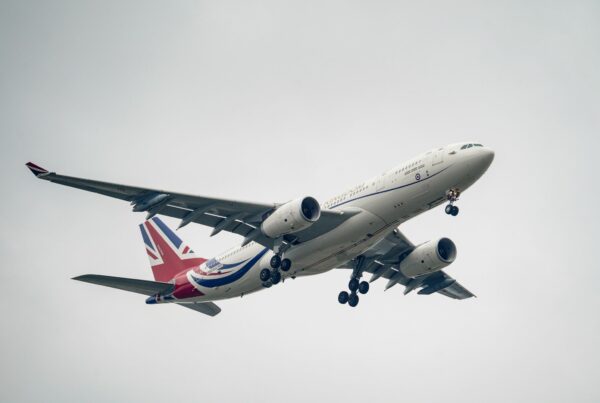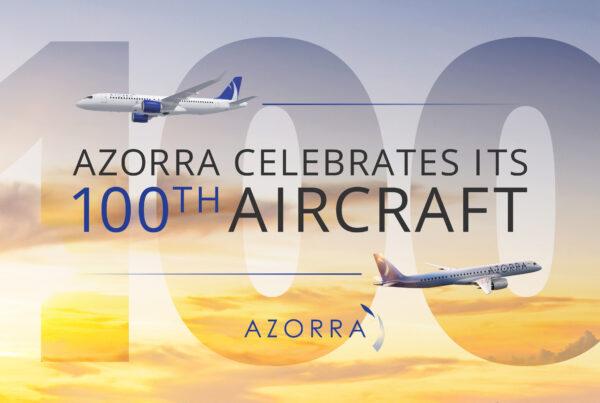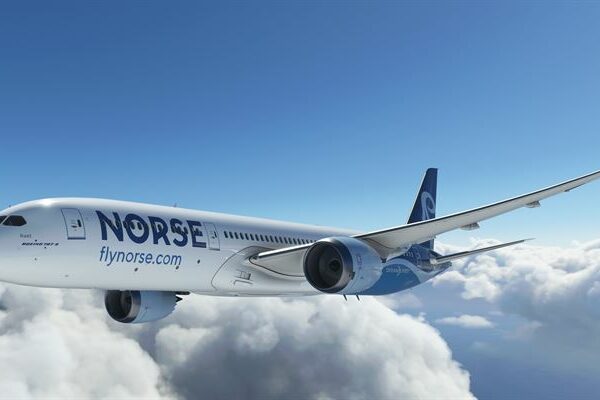Airbus has unveiled the long-expected rebranding of Bombardier’s CSeries aircraft, with the CS100 and CS300 renamed as the A220-100 and A220-300.
Just a week after it formally closed the deal that saw it take majority control of the CSeries aircraft programme, a ceremony held today (Tuesday) at its Henri-Ziegler Delivery Centre near Toulouse, France saw an A220-300 freshly painted in its new Airbus livery landed to display its new name and colours. The two A220 models are fully optimised for the 100-150 seat market and complement Airbus’ existing A320neo family, it says.
Guillaume Faury, Airbus president, commercial aircraft, paid tribute to “all the women and men at Bombardier and the supply chain who have strived over the past years to bring this fantastic aircraft to the world. The A220 now enters a new phase in its career with all Airbus’ resources behind it to further its commercial success worldwide.”
Eric Schulz, chief commercial officer at the manufacturer, added: “We are enthusiastic about selling the A220 thanks in particular to its technology which gives it a decisive edge in a very competitive market. I have received a lot of positive feedback from customers regarding the aircraft’s outstanding passenger experience, its lower fuel burn, lower weight and quieter engines. All these reasons contribute to my optimism that Airbus will support to make the A220 a great commercial success.”
The manufacturer is targeting initial sales of at least 100 orders for its new addition before the end of this year. The company believes the A220 family can secure approximately half the market for 100-150 seat aircraft over the next 20 years, forecast at around 3,000 units (excluding its A319). The models are designed to seat between 108 and 160 people.
Airbus has also committed to extending its plant in Mobile, Alabama to manufacture the aircraft, adding to Bombardier’s existing facility in Mirabel, Quebec. The US facility could build up to 60 aircraft per year.
The former CSeries twin-jet aircraft are powered by Pratt and Whitney PW1500G engines and deliver 20% lower fuel burn per seat compared to previous generation competitor aircraft, it says.
Bombardier stated that it “fully support” the rebranding, and that it was “a clear signal to the market that Airbus has put its full weight behind the programme, which should accelerate sales momentum and cost reduction efforts.
Written by: Mark Thomas
If you have any feedback about this article or would like to suggest a topic for future investigation, please contact us.








